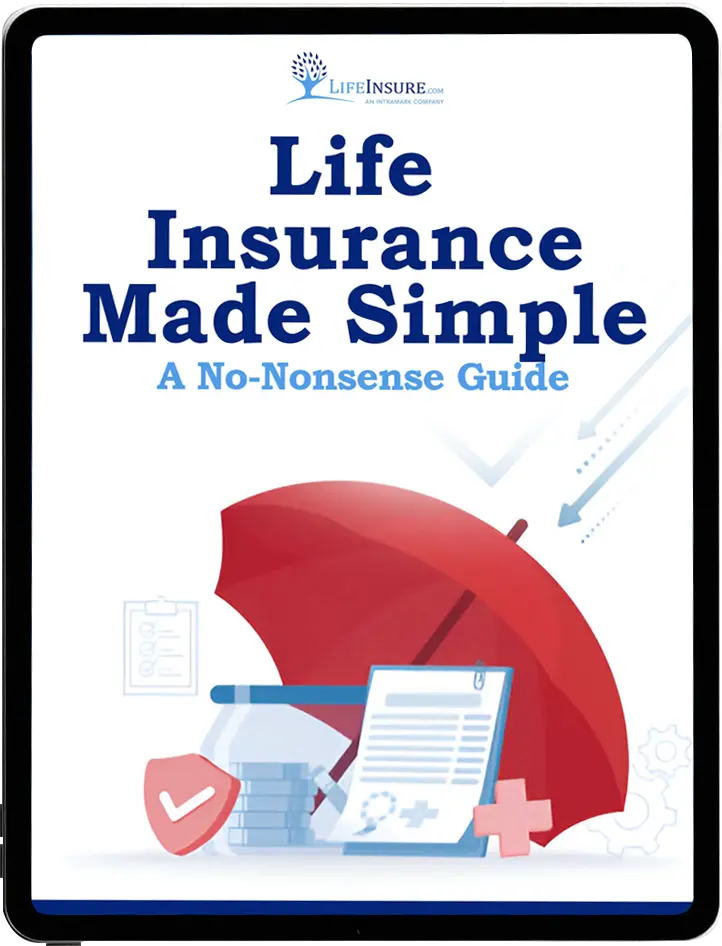Get Graded Benefit Life Insurance Quotes
In the world of life insurance, graded benefit whole life insurance policies present a unique option for individuals seeking coverage. This article explores what a graded death benefit is, how it functions within the scope of whole life insurance, and why it might be a crucial choice for certain individuals.
Easy Article Navigation
Understanding the nuances of this type of life insurance can be vital for making informed decisions about your long-term financial planning and the security of your beneficiaries.
What is Graded Benefit Whole Life Insurance?
Graded benefit whole life insurance is a type of life insurance policy that provides a death benefit that increases over time. Initially, beneficiaries will receive a lower amount if the insured passes away within the first few years of the policy.
Expanding further, the concept of a graded death benefit in whole life insurance is particularly designed to accommodate individuals who face challenges in obtaining traditional life insurance, such as those with existing health issues or advanced age. In these policies, the gradual increase in the death benefit over time serves as a compromise between the insurer’s risk management and the policyholder’s need for coverage.
This structure allows for the provision of life insurance to a wider range of individuals, making it a crucial option in the life insurance market. However, potential policyholders need to understand that the graded aspect primarily affects the death benefit in the early years of the policy.
How Does Graded Benefit Differ from Traditional Life Insurance Policies?
Unlike standard life insurance policies, graded benefit whole life insurance policies often have no medical exam requirement, making them an option for those who might not qualify for traditional policies. The trade-off is the graded period, where the full death benefit is not immediately available.
Who Should Consider a Graded Benefit Whole Life Policy?
Individuals with pre-existing health conditions or older applicants who have been declined standard life insurance may find graded death benefit policies a suitable alternative. This option provides a way to leave a small amount for beneficiaries, even if it’s not the full policy amount.
Understanding the Premiums of Graded Benefit Whole Life Insurance
The premiums of graded death benefit policies can be higher than standard policies due to the increased risk the insurance company takes on. Understanding how these premiums are calculated and how they change over time is crucial.
The Graded Period: What Happens in the First Few Years?
During the graded period, the death benefit is limited. If the insured passes away due to natural causes within the first two to three years, beneficiaries might only receive a portion of the death benefit or the premiums paid plus interest.
The initial years of a graded benefit whole life policy, commonly known as the graded period, are crucial in understanding the policy’s structure and potential impact on beneficiaries. This period often acts as a safeguard for insurance companies against the high risk of insuring individuals who may not qualify for standard policies. It’s important to note that if the insured passes away from accidental causes during this period, many policies will pay out the full death benefit, unlike natural causes, where the benefit is limited.
Issues to Consider When Choosing Graded Benefit Whole Life Insurance
Potential policyholders should consider factors like the length of the graded period, the cost of premiums, and the percentage of the death benefit available during the initial years. These factors can significantly impact the overall value of the policy.
In addition to these considerations, potential policyholders must also assess their own financial situation and future needs. It’s important to realistically evaluate whether the graded death benefit policy aligns with your financial goals and the needs of your beneficiaries. Consider if the policy’s death benefit, even at its full value in later years, will be sufficient to meet your beneficiaries’ financial needs.
Also, take into account the policy’s cash value growth, if applicable, and how it might contribute to your long-term financial plans. Understanding the policy’s implications on your overall financial strategy, including any tax consequences, is crucial.
How to Get Life Insurance with a Graded Death Benefit
To acquire life insurance with a graded death benefit, the process is relatively straightforward yet requires careful consideration of your specific needs and circumstances. Typically, this type of policy is aimed at individuals who may have difficulty obtaining standard life insurance due to health conditions or advanced age. The first step is to research and identify insurance providers that offer graded death benefit policies. It’s essential to compare various plans to understand their terms, coverage limits, and the structure of their graded death benefits.
Once you have shortlisted potential insurers, the application process usually involves answering a series of health-related questions. These questions are less comprehensive than those required for standard life insurance policies, often eliminating the need for a medical examination. However, truthful and accurate responses are crucial for the validity of the policy. After applying, the insurance company will review your application and determine eligibility based on their criteria.
In terms of premiums, it’s important to note that policies with graded death benefits typically have higher premiums compared to standard life insurance policies due to the increased risk to the insurer. Therefore, budgeting for the higher cost is an important part of the decision-making process. Once the policy is in place, it’s important to understand the terms, particularly how the graded death benefit will be paid out over time and under what conditions. This understanding ensures that you have realistic expectations of the policy’s benefits and limitations.
How Graded Death Benefit Works: Explaining the Process
The process of how a graded benefit whole life insurance policy works in whole life insurance is centered on a gradual increase in the available death benefit over the initial years of the policy. To illustrate this with a practical example, consider a policy purchased with a face value of $50,000. If the policyholder passes away within the first year of coverage, the beneficiaries may only receive a return of the premiums paid plus a certain percentage of interest rather than the full face amount.
In the second year, the payout might increase to 30% of the face value, and in the third year, it could rise to 60%. Only after this initial period, often the fourth year and beyond, would the beneficiaries be eligible to receive the full death benefit amount of $50,000, should the policyholder pass away.
This structure is particularly important for individuals who may not qualify for standard life insurance due to health reasons or age. It offers them a viable option to secure some level of financial protection for their beneficiaries, albeit with certain limitations in the initial years. The graded death benefit serves as a risk management tool for insurance companies, balancing the need to provide coverage for high-risk individuals with the financial stability of the insurer. By understanding this mechanism, potential policyholders can make more informed decisions about whether a graded benefit whole life insurance policy aligns with their financial goals and needs for beneficiary protection.
Key Article Takeaways
- Graded Death Benefit: A unique life insurance option where the full death benefit increases over time.
- Ideal Candidates: Best suited for those who may not qualify for traditional life insurance policies.
- Graded Period: The initial years of the policy where the full death benefit is not available.
- Premiums: Typically, higher than standard policies due to the nature of the coverage.
- Death Benefits: Used for various purposes, including covering final expenses or leaving a legacy.
- Choosing a Policy: Consider the length of the graded period, premium costs, and available death benefits.
Conclusion: Navigating Your Options in Graded Death Benefit Whole Life Insurance
In conclusion, understanding the intricacies of graded death benefit whole life insurance is essential for those seeking a non-traditional path to life insurance, particularly for individuals facing challenges in obtaining standard coverage. This type of policy stands out as a strategic choice for offering some level of financial protection and peace of mind, despite the limitations during the initial graded period. While the premiums may be higher and the full benefits not immediately accessible, the graded death benefit policy serves as a vital safety net, especially for older individuals or those with pre-existing health conditions.
As you consider your life insurance options, weigh the benefits and limitations of these policies carefully. Remember, the right life insurance policy is not just about coverage; it’s about making a thoughtful choice that aligns with your personal circumstances, providing security and reassurance to you and your loved ones.
Frequently Asked Questions
- A graded death benefit is a feature of certain whole life insurance policies where the full death benefit is not immediately payable upon the policyholder’s death. If the insured dies within the first few years of the policy, typically two to three years, the beneficiaries may receive only a portion of the death benefit or a return of the premiums paid plus interest. After this waiting period, the full death benefit becomes payable.
- Graded death benefit policies are particularly suited for individuals who may not qualify for traditional life insurance due to health issues or age. These policies provide a way for people with pre-existing conditions or senior citizens to obtain life insurance coverage, albeit with a limited initial death benefit.
- In the first year or two, if the insured passes away, the beneficiaries typically receive a return of the premiums paid plus a certain percentage of interest. The payout then increases gradually each year, often reaching 30% of the face amount in the second year, 60% in the third, and then the full face amount in the fourth year and beyond. This structure provides a level of protection for insurance companies against the risk of insuring individuals who may have significant health risks.
- Yes, graded death benefit policies generally have higher premiums than standard life insurance policies. This is because they are often offered without a medical exam and cover individuals who might pose a higher risk to the insurer. The higher premiums act as a safeguard for the insurance company.
- The main advantage of these policies is that they offer life insurance coverage to individuals who might otherwise be unable to obtain it. However, the disadvantages include the graded benefit itself, meaning the full death benefit is not immediately available, and the typically higher premiums relative to the coverage provided. Additionally, the coverage amounts for these policies often have a maximum limit, which can be considerably lower than that of standard life insurance policies.
Get Graded Benefit Life Insurance Quotes
Last Updated on September 23, 2024 by Richard Reich


